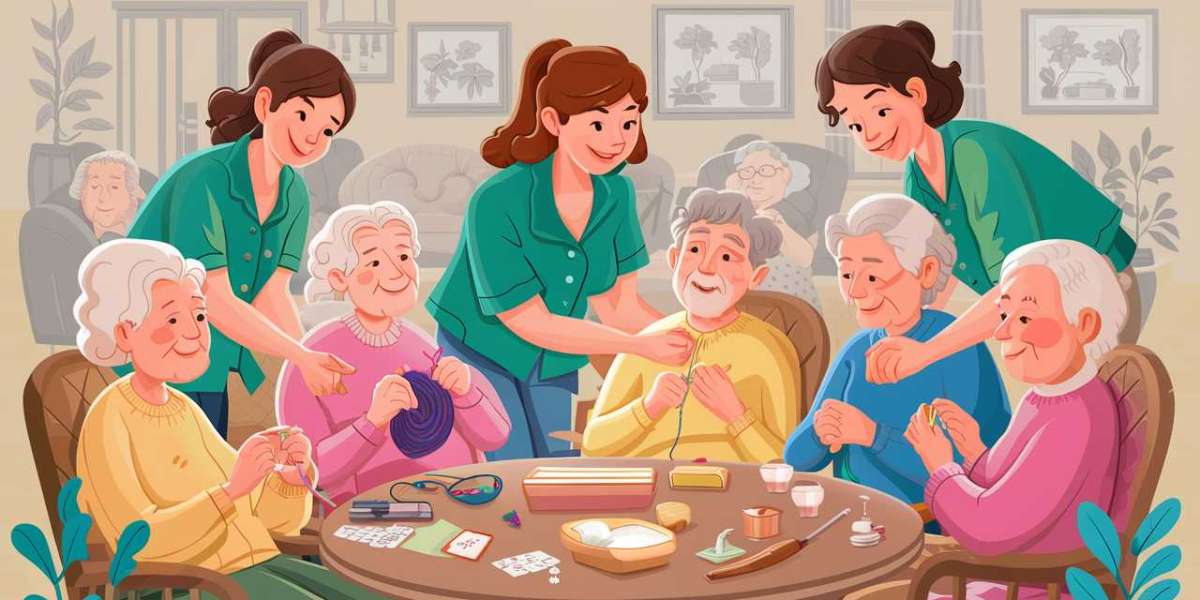Understanding Assisted Living: A Graduated Approach
Assisted living facilities provide a bridge between independent living and skilled nursing care. They offer private residences with a range of services, from housekeeping and meal preparation to medication management and assistance with daily activities. The key differentiator lies in the level of care provided.
The 5 Levels of Care:
Independent Living: This level caters to seniors who are largely self-sufficient but may appreciate amenities like on-site dining, social activities, and security features. According to a survey by the AARP, 90% of seniors express a desire to stay in their homes for as long as possible [1]. Independent living fulfills this yearning while offering a supportive environment.
Minimal Assistance: This level is ideal for individuals who require some help with daily activities like bathing, dressing, or medication management. Caregivers are available to provide assistance as needed, promoting continued independence for as long as possible.
Stand-by Assistance: As needs become more complex, this level offers stand-by assistance for a wider range of ADLs (Activities of Daily Living). Caregivers are readily available to provide physical or verbal cues to help residents complete tasks.
Moderate Assistance: This level caters to seniors who require significant assistance with most ADLs. Caregivers provide hands-on help with bathing, dressing, toileting, and other daily routines, ensuring safety and well-being. A study by the Centers for Disease Control and Prevention (CDC) states that over one-third of adults aged 65 and over have multiple chronic health conditions [2]. This level of care is suited for those who require ongoing management of such conditions.
High-Level or Full Assistance: This level offers comprehensive care for individuals who require extensive assistance with all ADLs and may have complex medical needs. Caregivers provide around-the-clock supervision and medical support, often in close collaboration with healthcare professionals.
Choosing the Right Level:
The ideal level of care hinges on individual needs and preferences. Consider these factors:
- Physical Capabilities: Can daily tasks be managed independently, or is assistance required?
- Cognitive Functioning: Is there a need for medication management or reminders?
- Medical Conditions: Are there chronic health concerns requiring ongoing medical supervision?
- Personal Preferences: Does the individual value independence or desire a more structured environment?
A Conversation Worth Having
Open communication is key. Discuss needs and concerns with loved ones and healthcare professionals. There's no "one size fits all" solution. Assisted living communities offer a needs assessment to determine the most appropriate level of care.
Beyond the Five: Additional Considerations for a Seamless Transition
While the five levels of care provide a solid framework, there are additional factors to consider for a smooth transition into assisted living:
- Specialized Care: Some communities offer specialized care units for individuals with specific needs, such as memory care for those with dementia or Alzheimer's disease.
- Respite Care: This short-term stay option allows caregivers a temporary break while their loved ones receive quality care in an assisted living environment.
- Transitional Services: Many communities offer transitional services to help residents adjust to their new surroundings, easing the acclimation process.
Making the Move: A Checklist for Success
Moving to assisted living can be an emotional and logistical undertaking. Here's a checklist to ensure a smooth transition:
- Schedule Tours: Visit several communities to assess the atmosphere, amenities, and level of care provided. Engage with residents and staff to get a firsthand feel for the environment.
- Involve Loved Ones: Include family members in the decision-making process. Their support will be crucial during and after the move.
- Downsizing: Begin decluttering and downsizing belongings. Consider storage options or responsible ways to part with cherished items.
- Transfer Records: Ensure all medical records and advanced directives are readily available for the assisted living staff.
- Financial Considerations: Understand the cost structure of different care levels and explore financial options like long-term care insurance.
The Takeaway: Assisted Living - A Bridge to a Fulfilling Future
Choosing the right level of care in assisted living empowers seniors to live life to the fullest while receiving the support they need. By understanding the options, considering individual needs, and planning for a smooth transition, assisted living can become a bridge to a fulfilling and secure future.
Remember, this journey is not one to take alone. Seek professional guidance, involve loved ones, and embrace the possibilities. Assisted living offers a supportive environment where seniors can thrive and continue living a life rich with purpose and connection.







